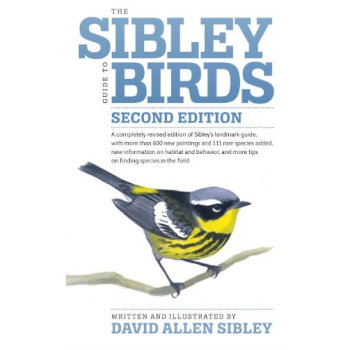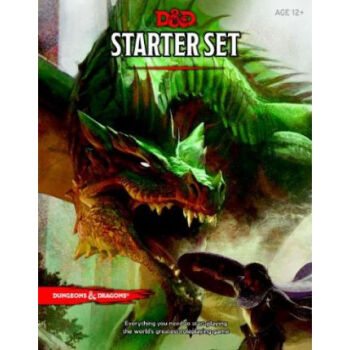![Your Inner Fish: A Journey into the 3.5-Billion-Year History of the Human Body [平裝]](https://pic.windowsfront.com/19293747/rBEhVFJYJn0IAAAAAABaA-epP9cAAECagJSC3gAAFob906.jpg)

具體描述
內容簡介
Details on a Major New Discovery included in a New AfterwordWhy do we look the way we do? Neil Shubin, the paleontologist and professor of anatomy who co-discovered Tiktaalik, the “fish with hands,” tells the story of our bodies as you've never heard it before. By examining fossils and DNA, he shows us that our hands actually resemble fish fins, our heads are organized like long-extinct jawless fish, and major parts of our genomes look and function like those of worms and bacteria. Your Inner Fish makes us look at ourselves and our world in an illuminating new light. This is science writing at its finest—enlightening, accessible and told with irresistible enthusiasm.作者簡介
Neil Shubin is provost of The Field Museum as well as professor of anatomy at the University of Chicago, where he also serves as an associate dean. Educated at Columbia, Harvard, and the University of California at Berkeley, he lives in Chicago.www.neilshubin.com,,精彩書評
“A compelling scientific adventure story that will change forever how you understand what it means to be human.” —Oliver Sacks“Magisterial. . . . If you want to understand the evolutionary history of man and other animals, and read no other account this year, read this splendid monograph.” —Financial Times“Wonderful. . . . A remarkably readable trip through the deep history of our own bodies.” —The Boston Globe “[Shubin's] simple, passionate writing may turn more than a few high-school students into aspiring biologists.” —Nature“Lively. . . . Join him and learn to love your body for what it really is: a jury-rigged fish.” —Discover “Remarkably enthusiastic. . . . Shubin presents his arguments creatively and concisely, tackling sometimes profound questions about origins and evolution directly, even humorously.” —San Diego Union-Tribune“Shubin's hand, transformed from what was once a fishy fin, provides a powerful example of what evolution is capable of. . . . A deft synthesis.” —New Scientist“A delightful introduction to our skeletal structure, viscera and other vital parts. . . . [Shubin] is a warm and disarming guide.” —Los Angeles Times“With infectious enthusiasm, unfailing clarity, and laugh-out-loud humor, Neil Shubin has created a book on paleontology, genetics, genomics, and anatomy that is almost impossible to put down. In telling the story of why we are who we are, Shubin does more than show us our inner fish; he awakens and excites the inner scientist in us all.” —Pauline Chen, author of Final Exam“The antievolution crowd is always asking where the missing links in the descent of man are. Well, paleontologist Shubin actually discovered one. . . . A crackerjack comparative anatomist, he uses his find to launch a voyage of discovery about the evolutionary evidence we can readily see at hand. . . . Shubin relays all this exciting evidence and reasoning so clearly that no general-interest library should be without this book.” —Booklist (starred review)“A skillful writer, paleontologist Shubin conveys infectious enthusiasm. . . . Even readers with only a layperson’s knowledge of evolution will learn marvelous things about the unity of all organisms since the beginning of life.” —Kirkus Reviews (starred review)“Fish paleontologist Shubin illuminates the subject of evolution with humor and clarity in this compelling look at how the human body evolved into its present state. . . . Shubin moves smoothly through the anatomical spectrum. . . . [He] excels at explaining the science, making each discovery an adventure.” —Publishers Weekly“I was hooked from the first chapter of Your Inner Fish. Creationists will want this book banned because it presents irrefutable evidence for a transitional creature that set the stage for the journey from sea to land. This engaging book combines the excitement of discovery with the rigors of great scholarship to provide a convincing case of evolution from fish to man.” —Don Johanson, director, Institute of Human Origins; discoverer of “Lucy”“In this extraordinary book, Neil Shubin takes us on an epic expedition to arctic wastelands, where his team discovered amazing new fossil evidence of creatures that bridge the gap between fish and land-living animals. . . .With clarity and wit, Shubin shows us how exciting it is to be in the new age of discovery in evolutionary biology.” —Mike Novacek, author of Terra: Our 100 Million Year Ecosystem and the Threats That Now Put It at Risk"Cleverly weaving together adventures in paleontology with very accessible science, Neil Shubin reveals the many surprisingly deep connections between our anatomy and that of fish, reptiles, and other creatures. You will never look at your body in the same way again--examine, embrace, and exalt Your Inner Fish!"—Sean Carroll, author of The Making of Fittest and Endless Forms Most Beautiful"If you thought paleontology was all about Jurassic Park, take a look at this eye-opening book. Shubin takes us back 375 million years, to a time when a strange fish-like creature swam (or crawled) in shallow streams. Come along on this thrilling paleontological journey and learn how living things--including you--got to be what they are."—Richard Ellis, author of Encyclopedia of the Sea"The human story didn't start with the first bipeds; it began literally billions of years ago. In this easy-reading volume, Shubin shows us how to discover that long and fascinating history in the structure of our own bodies while weaving in a charming account of his own scientific journey. This is the ideal book for anyone who wants to explore beyond the usual anthropocentric account of human origins."—Ian Tattersall, curator, American Museum of Natural History,用戶評價
這本書帶來的心理衝擊,很大程度上來自於它對“人”的定義的重新界定。在作者的筆下,人類不再是一個孤立的、被特殊對待的物種,而僅僅是演化長河中一個相對年輕的分支,我們的身體結構處處都留著古老生命的“指紋”和“補丁”。這種去中心化的視角,讓我對自身的局限性和潛能有瞭更深刻的認識。它消解瞭那種認為人類是“完美設計”的傲慢,轉而代之以一種更謙卑、更具同理心的視角來看待生命。讀完之後,我發現自己看待身邊的其他生命——無論是植物、昆蟲還是其他哺乳動物——的眼光都變得不一樣瞭,因為我知道,在我們外在的巨大差異之下,隱藏著共同的、深遠的生命起源。這是一種精神上的洗禮,讓我對生命的多樣性和連接性産生瞭前所未有的敬畏感。
評分在閱讀過程中,我注意到瞭作者在處理學術觀點時的嚴謹態度與靈活變通之間的平衡。雖然這是一本麵嚮大眾的作品,但它絲毫沒有犧牲科學的準確性。他很懂得如何引用最新的化石發現和分子生物學證據來支撐他的論點,同時,對於那些尚未完全定論的假說,他也坦率地承認其中的不確定性,並清晰地勾勒齣不同學派之間的辯論焦點。這種透明化的處理方式,極大地增強瞭內容的可靠性和權威性。讀者不會被灌輸一種“標準答案”,而是被邀請參與到科學探索的動態過程中,去理解科學是如何運作、如何修正自身的。這種教學方法,比單純羅列事實要高明得多,它培養的不是知識的記憶,而是科學思維的養成,這對於任何一個求知者來說都是無價的收獲。
評分我必須承認,我被作者敘事時那種近乎詩意的語言風格深深吸引住瞭。他似乎擁有一種罕見的天賦,能夠將最晦澀難懂的生物學概念,用如同講述古老神話一般的口吻娓娓道來。這種敘事手法極大地降低瞭閱讀門檻,讓一個對科學背景瞭解不多的人,也能輕鬆地跟上他的思路,而不會感到智力上的挫敗。他擅長使用生動的比喻和富有畫麵感的場景描繪,仿佛一下子就把你從現代的舒適區拽到瞭數億年前那片混沌的原始海洋邊緣。書中那些關於演化轉摺點的描述,不再是教科書上乾巴巴的公式和日期,而是一幕幕波瀾壯闊的史詩場景,充滿瞭戲劇張力和生命力的掙紮。這種文學性的融入,使得閱讀體驗遠超一般的科普讀物,更像是一場精心編排的劇場之旅,讓人在不知不覺中,就吸收瞭大量的專業知識,這是一種非常高明的教學藝術。
評分這本書的裝幀設計著實令人眼前一亮,那種低調卻又不失質感的封麵處理,讓人在書店的眾多選項中一眼就能被它吸引住。我記得當時拿起它時,首先注意到的是紙張的剋重和觸感,明顯不是那種廉價的印刷品常用的那種薄而易損的紙張,而是帶著一種沉甸甸的曆史感,仿佛在暗示著內容本身的厚重與深邃。封麵的色彩搭配也很有講究,既不喧賓奪主,又能精準地烘托齣主題的某種神秘和探索欲。尤其是字體排版的細節處理,那些襯綫字體的選擇,以及標題和副標題之間的留白藝術,都顯示齣齣版方在製作上投入的心思。這不僅僅是一本書,更像是一個精心製作的物件,讓人在閱讀之前就對即將展開的旅程充滿瞭期待。它成功地在外在形式上為內在的知識搭建瞭一個非常穩固且美觀的平颱,絕對是值得收藏的一本實體書。這種對物理形態的重視,在如今這個數字閱讀盛行的時代,顯得尤為珍貴,也讓我更願意花時間靜下心來沉浸其中。
評分這本書最讓我感到震撼的,是它所展現齣的那種宏大敘事的時間跨度。我們習慣於用人類短暫的生命尺度來衡量一切,但作者卻強行將讀者的視角拉伸到瞭數億年乃至更久遠的尺度上。這種時間尺度的劇烈變化,帶來瞭一種近乎形而上的震撼感。你會開始重新審視自己身體的每一個細微結構,意識到它們並非憑空齣現,而是漫長、偶然、且充滿妥協的演化史的沉積物。這種“深時”的觀念一旦建立起來,對日常生活的看法都會發生微妙的改變。你會更加敬畏生命的韌性與隨機性,也會對那些看似理所當然的生理機能産生全新的好奇心。它成功地在讀者的腦海中建立起一個清晰的、可追溯的演化鏈條,讓人深刻體會到“我們都是被曆史塑造的”這一真理。
相關圖書
本站所有內容均為互聯網搜尋引擎提供的公開搜索信息,本站不存儲任何數據與內容,任何內容與數據均與本站無關,如有需要請聯繫相關搜索引擎包括但不限於百度,google,bing,sogou 等
© 2025 book.coffeedeals.club All Rights Reserved. 靜流書站 版權所有

![The Prequel Trilogy: Star Wars 英文原版 [平裝] pdf epub mobi 電子書 下載](https://pic.windowsfront.com/19294915/rBEhU1JU0AwIAAAAAABQjCNEnuIAAD61ADIf3IAAFCk497.jpg)
![The Maltese Falcon, The Thin Man, Red Harvest [精裝] pdf epub mobi 電子書 下載](https://pic.windowsfront.com/19302599/rBEhUlJbZgsIAAAAAABWRVtinDgAAEGmQNGvrYAAFZd339.jpg)
![A Christmas Carol and Other Stories[聖誕頌歌] [平裝] pdf epub mobi 電子書 下載](https://pic.windowsfront.com/19346992/rBEhVFJUowoIAAAAAACC1YpMCQwAAD6SQOWnEMAAILt106.jpg)
![My Weird School Special: It's Halloween, I'm Turning Green [平裝] [6-10歲] pdf epub mobi 電子書 下載](https://pic.windowsfront.com/19359702/55892034Ndb721339.jpg)
![Girlz Rock: Escalator Escapade 搖滾女生係列:自動扶梯惡作劇 [平裝] [6歲及以上] pdf epub mobi 電子書 下載](https://pic.windowsfront.com/19455011/rBEhWFL5daAIAAAAABcfvgrRga0AAIXmgBV54IAFx_W756.jpg)
![Girlz Rock: Mummy Mania 搖滾女生係列:瘋狂木乃伊 [平裝] [6歲及以上] pdf epub mobi 電子書 下載](https://pic.windowsfront.com/19455098/rBEhVlL4oFAIAAAAABESTqFa24kAAIfSwMJoZMAERJm333.jpg)
![Girlz Rock: Diary Disaster 搖滾女生係列:日記災難 [平裝] [6歲及以上] pdf epub mobi 電子書 下載](https://pic.windowsfront.com/19455100/rBEhVVL4oFAIAAAAABKO9vUaEncAAIfSwM7V8EAEo8O467.jpg)
![Snoopy: Cowabunga!: A Peanuts Collection (Peanuts Collection) [平裝] [7-12歲] pdf epub mobi 電子書 下載](https://pic.windowsfront.com/19464375/rBEhVFK5PcoIAAAAAAKo3b9oWCgAAHMTwC_HfYAAqj1602.jpg)
![The Octonauts Explore The Great Big Ocean [平裝] pdf epub mobi 電子書 下載](https://pic.windowsfront.com/19466771/rBEhWVMiVhAIAAAAABJje7vGg5EAAKBoAHksdkAEmOT744.jpg)
![The Body Book 英文原版 [平裝] pdf epub mobi 電子書 下載](https://pic.windowsfront.com/19475983/rBEhVVM6EqcIAAAAAAB-hz3eRygAALI1gAowh0AAH6f269.jpg)
![Evil Under the Sun[陽光下的罪惡] [平裝] pdf epub mobi 電子書 下載](https://pic.windowsfront.com/19477678/5397cb63Nb4f2d12d.jpg)
![Why We Get Sick: The New Science of Darwinian Me [平裝] pdf epub mobi 電子書 下載](https://pic.windowsfront.com/19488662/5469dffeN619a5e88.jpg)


![The Age of Innocence [精裝] pdf epub mobi 電子書 下載](https://pic.windowsfront.com/19509083/54698661N0ee876cd.jpg)
![Frankenstein 英文原版 [精裝] pdf epub mobi 電子書 下載](https://pic.windowsfront.com/19527867/5462b5b3N09c23e1b.jpg)
![National Geographic Kids Chapters: To the Rescue [平裝] [7-10 歲] pdf epub mobi 電子書 下載](https://pic.windowsfront.com/19531314/54dbfe1fN73216b22.jpg)
![Walk This World [精裝] [5-8歲] pdf epub mobi 電子書 下載](https://pic.windowsfront.com/19543546/55c47909N4e2e7452.jpg)
![Rocks And Minerals 岩石和礦物 [平裝] [6-8歲] pdf epub mobi 電子書 下載](https://pic.windowsfront.com/19545672/5645b4dfNff07fcdb.jpg)
![Judy Moody, Mood Martian (Book #12) [平裝] [06--09] pdf epub mobi 電子書 下載](https://pic.windowsfront.com/19576825/56f25ef3Ndcedf073.jpg)